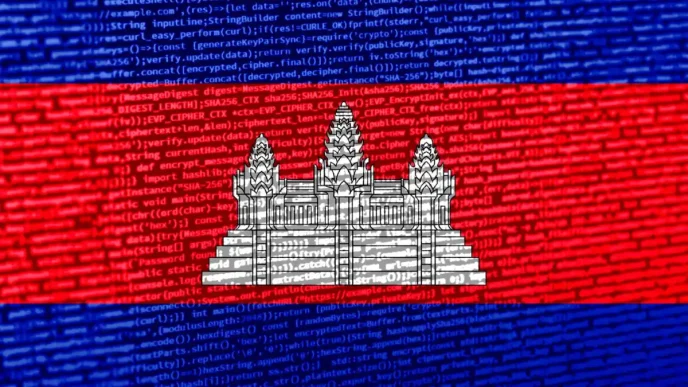Thailand, a key player in Southeast Asia’s economic landscape, is grappling with a complex set of challenges as global uncertainties cast a shadow over its growth prospects. From fluctuating export demands to domestic policy constraints, the nation faces a critical juncture that could shape its economic trajectory for years to come. As policymakers and businesses navigate this turbulent period, questions linger about the resilience of Thailand’s economy and its ability to adapt to an ever-changing international environment.
Export Pressures and Global Trade Dynamics
Thailand’s economy has long relied on its robust export sector, with electronics, automotive parts, and agricultural products forming the backbone of its international trade. However, recent disruptions in global supply chains and shifting trade policies have placed significant pressure on this critical revenue stream. Reports from local sources indicate that export growth has slowed in recent months, with key markets like the United States and Europe showing reduced demand amid inflationary pressures and geopolitical tensions.
The impact of these global dynamics is palpable in Thailand’s industrial hubs, where manufacturers are reporting lower orders and rising production costs. The situation is compounded by the appreciation of the Thai Baht against major currencies, making Thai goods less competitive in international markets. While exact figures vary, the broader trend of declining export performance has raised concerns among economic analysts about the sustainability of Thailand’s trade-driven growth model.
Domestic Policy Challenges and Fiscal Constraints
On the domestic front, Thailand’s government faces a delicate balancing act between stimulating economic growth and maintaining fiscal discipline. Recent policy measures aimed at boosting consumer spending and supporting small businesses have yielded mixed results. While initiatives such as tax relief for low-income households have provided some relief, the broader economic impact remains limited amid persistent inflation and rising household debt levels.
One of the key hurdles for policymakers is the constrained fiscal space to implement large-scale stimulus measures. Thailand’s public debt, while still within manageable limits compared to regional peers, has risen steadily in recent years due to pandemic-related spending. This leaves little room for aggressive investment in infrastructure or social programs, both of which are critical for long-term economic stability. Local reports suggest that the government is exploring public-private partnerships to fund key projects, though the success of such initiatives remains uncertain.
Tourism Recovery: A Double-Edged Sword
Tourism, a vital pillar of Thailand’s economy, has shown signs of recovery following the easing of global travel restrictions. Iconic destinations like Bangkok, Phuket, and Chiang Mai have seen a resurgence in international arrivals, providing a much-needed boost to local businesses and employment. However, this recovery is not without its challenges. The reliance on tourism exposes Thailand to external shocks, such as sudden changes in travel policies or health-related crises, which could derail progress.
Moreover, the uneven distribution of tourism revenue means that while popular destinations thrive, rural areas and less-visited regions continue to struggle. This disparity highlights the need for a more diversified economic base, a point emphasized by several economic observers in recent analyses. Balancing the benefits of tourism with investments in other sectors, such as technology and manufacturing, could help mitigate these risks and create a more resilient economy.
Inflation and Cost of Living Pressures
Rising inflation has emerged as a pressing concern for Thai households, with the cost of essential goods and services climbing steadily. Energy prices, driven by global market volatility, have contributed significantly to this trend, placing additional strain on consumers already grappling with economic uncertainty. Food prices, a critical component of household budgets in Thailand, have also seen notable increases, further eroding purchasing power.
The government has introduced measures to cap prices on certain goods and provide subsidies for fuel, but these interventions have had limited impact in curbing the broader inflationary trend. For many Thais, particularly those in lower-income brackets, the rising cost of living is a daily challenge that underscores the urgency of targeted economic relief. As one local business owner in Bangkok noted, the struggle to maintain profitability amidst rising costs is a constant battle for small enterprises.
Regional Competition and Investment Shifts
Thailand’s economic challenges are further complicated by intensifying competition within Southeast Asia. Neighboring countries like Vietnam and Indonesia have made significant strides in attracting foreign direct investment (FDI), offering competitive labor costs and streamlined regulatory environments. This shift has prompted some multinational corporations to reconsider their long-term commitments to Thailand, raising concerns about the country’s position as a regional manufacturing hub.
To counter this trend, Thailand has rolled out incentives to attract high-value industries, such as electric vehicle production and digital technology. The Eastern Economic Corridor (EEC), a flagship initiative aimed at transforming Thailand’s eastern region into a high-tech industrial zone, is a cornerstone of this strategy. While early results show promise, the long-term success of such projects depends on sustained government support and the ability to address infrastructure and logistical bottlenecks.
Labor Market Dynamics and Demographic Shifts
Thailand’s labor market is undergoing significant changes, driven by both economic and demographic factors. An aging population, coupled with a declining birth rate, poses long-term challenges for workforce sustainability. At the same time, the demand for skilled labor in emerging sectors like technology and renewable energy is outpacing supply, creating a skills mismatch that hinders economic progress.
Efforts to address these issues include investments in vocational training and education reform, though progress has been slow. Additionally, Thailand’s reliance on migrant labor, particularly from neighboring countries like Myanmar and Cambodia, introduces complexities related to immigration policy and labor rights. Striking a balance between meeting labor demands and ensuring fair treatment for workers remains a critical issue for policymakers.
Environmental Concerns and Sustainable Growth
As Thailand charts its economic future, environmental sustainability has become an increasingly important consideration. Climate change poses direct risks to key sectors like agriculture and tourism, with rising sea levels and extreme weather events threatening livelihoods and infrastructure. The government has pledged to achieve carbon neutrality by 2050, but the path to this goal is fraught with challenges, including the need to transition away from fossil fuel dependency.
Initiatives to promote renewable energy and sustainable agricultural practices are gaining traction, supported by both public and private sector efforts. However, the scale of investment required to achieve meaningful progress is substantial, and competing economic priorities may delay critical action. For Thailand, integrating environmental goals into its broader economic strategy is not just an option but a necessity for long-term resilience.
Looking Ahead: Navigating Uncertainty
As Thailand confronts these multifaceted economic challenges, the road ahead remains uncertain. The interplay of global trade dynamics, domestic policy constraints, and regional competition will continue to shape the country’s growth trajectory. While short-term measures can provide relief, sustainable progress will require a comprehensive approach that addresses structural issues and fosters innovation.
For now, the resilience of Thailand’s economy will be tested by its ability to adapt to changing circumstances and seize emerging opportunities. As policymakers, businesses, and communities grapple with these challenges, the question remains: can Thailand transform its economic model to thrive in an increasingly complex global landscape?
















